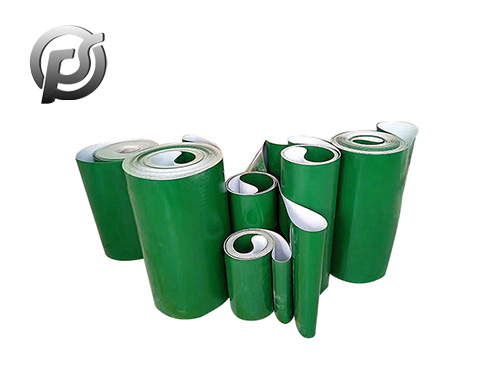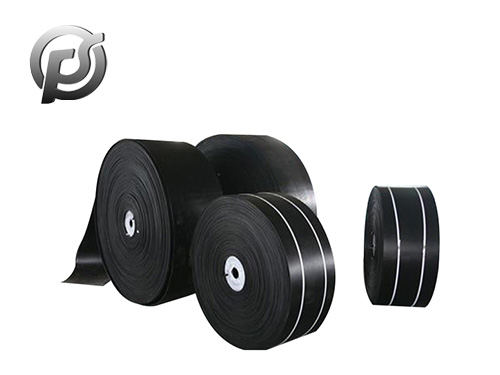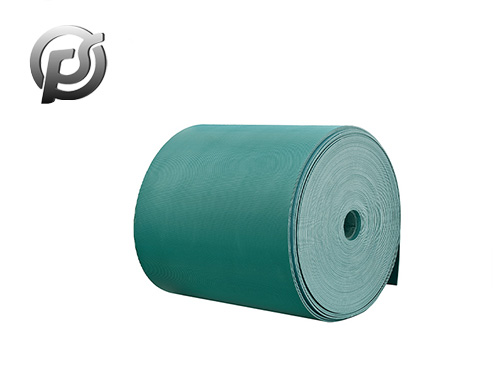Layered
conveyor belt is the most widely used conveyor belt at present, and the joint is the weakest link of the whole conveyor belt. It determines whether the belt can operate normally, and is related to the economic benefits and life and property safety of users. Therefore, it is necessary to pay attention to some problems in the vulcanization process. It is necessary to understand the type of tape, choose a good bonding length coefficient, calculate the length of the joint ladder, and grasp whether the conveyor belt to be bonded is common purpose, or refractory, heat resistant, acid and alkali resistant. Which kind of adhesive tape will be used. Our company (Shandong Su Steel rubber Conveyor Belt Co., LTD.) In order to better serve the majority of users, according to the stratified conveyor belt vulcanized joints and the actual use of the site, specially formulated the operating procedures of the stratified conveyor belt vulcanized joints for your reference.
First, the preparation before vulcanization
1. Check the site and choose the location convenient for handling as the vulcanization site
2. The bonding site should be clean, spacious, dry and bright
3, in the vulcanization operation, remove more than 2 groups of conveyor upper roller shelf (in order to place the vulcanization machine and ensure that there is sufficient space)
4. Vulcanizing machine frame, plus pressure plate and lower heating plate are placed on the middle frame of conveyor according to the Angle of heating plate
5. Tighten both ends of the tape according to the predetermined size and clamp with a splint, put the lead into the hot plate under the vulcanization machine, and then start the operation
Second, vulcanization operation procedures and key points
1. Mark the center line of the belt at both ends
2. Find three central points that are more than 1 meter away from each other and see if they are connected into a line. If can be connected into a straight line (if not, need to find the center point until three points can be connected into a straight line) with colored line mark the center line.
3. Before placing the vulcanizer, it is necessary to check whether the vulcanizer equipment is normal, and whether the comparison is consistent with the design requirements, so as to avoid failure during vulcanization and affect the bonding quality
Iii. Preparation of adhesive material
The vulcanized joint shall be covered with adhesive material (upper and lower sealing glue), adhesive material (core glue), glue pulp and other materials. Check whether the above materials are within the shelf life.
Iv. Lead dissection method and technical requirements
1, determine the joint form, according to the length of the joint to draw the ladder line, such as the vulcanizer plate is diamond shaped, joint line according to the diamond Angle into oblique line, according to the slope of the vulcanizing machine, generally 20°
2. Preparation before dissection: the running direction of the belt should be determined first. The covering glue should be peeled off for the head in the running direction, and the covering glue should be peeled off for the head in the non-running direction
3. Pay attention when stripping the head, do not damage the next layer of cloth, so as not to reduce the strength of the joint
4. Strip the cloth layer into step form.
Five, joint grinding and closing requirements
1. Grind the cloth layer carefully with electric steel wire grinder, and polish the vulcanized glue on the surface of the cloth layer clean, do not damage the cloth layer, and polish the covering glue and edge glue into rough surface
2, the two ends of the lead according to the center line correction accurately
3. Paint the glue evenly on both sides of the joint, and the brush should be uniform and not blank
4. After brushing the glue and drying completely, stick the sealing glue, and then stick the core glue on the cloth layer, and correct the center line when it is right. From the middle of the head to the sides of the compacted, apply sealant. The upper and lower sealing glue should be appropriate to avoid too little loss of material and too much loss affecting the quality of the joint
5. Before installing the vulcanization equipment, a layer of isolation paper or newspaper should be laid on and below the conveyor belt joint to facilitate the opening of the mold, and then the appropriate pad iron (or cut off the excess belt) will squeeze the belt body on both sides of the joint, and the heating plate frame will be installed for pressure, heating and vulcanization
Six, joint curing points
1. When the power is connected, the pressure reaches 1.0Mpa, and when the temperature rises to 100℃, it rises to the standard pressure. When the temperature of the ordinary belt rises to 145℃, the temperature of the tropical belt rises to 160℃, and the temperature of the vulcanization time is calculated. The general pressure is between 1.4-1.6Mpa
2, set the curing time correctly, ordinary conveyor belt curing time (minutes) =10+ cloth layer X1+ (on the covered glue + under the covered glue) X2, heat resistant conveyor belt curing time (minutes) =15+ cloth layer X1+ (on the covered glue + under the covered glue) X2
3, the hot plate length of the vulcanizing machine should be at least 200mm longer than the length of the vulcanizing joint to prevent the extrusion of the joint parts; The width should also be more than 200mm wide, in order to place the pad iron
4. After the vulcanization and insulation is finished, cut off the power supply, and the temperature drops below 80℃ before removing the vulcanizer, cut off the excess glue, and check whether the quality of the joint is qualified (no bright scars, bubbles, smooth interface). The vulcanization glue connection operation is completed.
 Optimizing Operations with PE Conveyor Belts: Durability, Efficiency, and Versatility
Optimizing Operations with PE Conveyor Belts: Durability, Efficiency, and Versatility
 Exploring the Efficiency and Versatility of Light Conveyor Belts
Exploring the Efficiency and Versatility of Light Conveyor Belts
 Polyester Conveyor Belts: Enhancing Efficiency and Reliability in Material Handling
Polyester Conveyor Belts: Enhancing Efficiency and Reliability in Material Handling